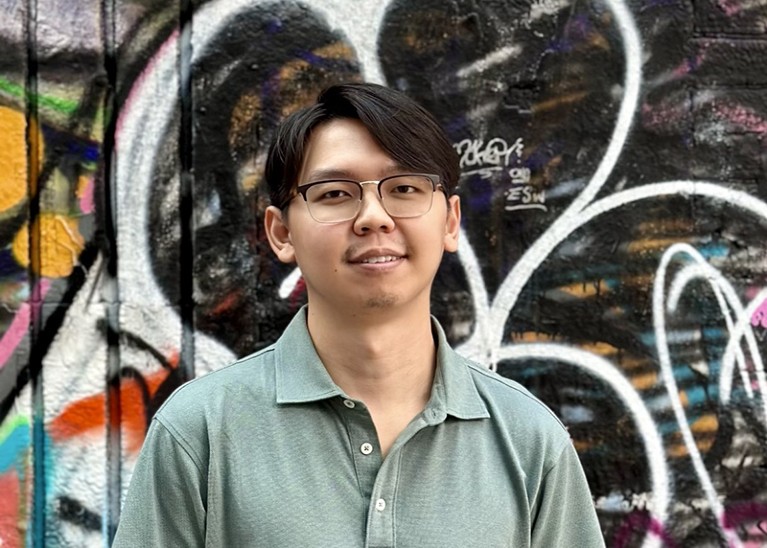
By staying organized in their job hunt, both authors received several job offers.Credit: Getty
We met during the last year of our PhD training, after securing placements at the University of Illinois Chicago’s Department of Psychiatry for our predoctoral internships — the final step of our clinical doctoral programmes. V. R. came from the University of Georgia in Athens and was pursuing a PhD in clinical psychology, and Q. L. came from Vanderbilt University in Nashville, Tennessee, and was working towards a PhD in clinical science and quantitative methods. It was amid the academic rigour and personal stress of the last year of our programmes that we became friends. We bonded over being immigrants and not speaking English as our first language while navigating the complexities of academia. We both wanted to forgo postdoctoral training and instead immediately become junior professors. Now, we’re assistant professors: V. R. is at the University of Illinois Urbana-Champaign, and Q. L. is at Boston University in Massachusetts.
The odds we faced in the academic job market had seemed insurmountable, particularly to immigrants, and we had been cautioned by mentors and even junior faculty members about the challenge ahead. But we succeeded: we received a combined total of 27 in-person interviews, leading to 15 tenure-track assistant-professor offers across departments of psychology, paediatrics or psychiatry, schools of education and academic medical centres. (You can check out our hints for nailing job interviews in our other article.)
Despite the positive outcome, the process was stressful, fast and unpredictable. Our friendship became a sanctuary: amid the daunting job market and our own self-doubt, we understood and encouraged each other. We want to offer what our friendship provided us — understanding, support and encouragement — to researchers hoping to stay in academia after earning a PhD, so we are sharing our reflections and insights.
We must first make clear: no amount of job-search tips and tricks can substitute for good science and a strong publication record. To gauge our readiness, we looked up the CV of the most recent hire in each department that we applied to. We also made sure we had backup offers of postdoctoral positions. While navigating this process, we learnt that institutions were interested in candidates who planned to pursue external funding.

Qimin Liu is now an assistant professor.Credit: Qimin Liu
We had both obtained federal and private funding before — making us more competitive. We urge aspiring professors to prioritize their research contributions, external fellowship and grant applications and academic achievements above all.
To readers who’ve successfully navigated this process, many of our reflections and insights could seem obvious. However, this kind of advice can be the hardest to follow during a fast-moving job hunt, with several moving pieces involved and new considerations and job offers or advertisements emerging unexpectedly. Treat this as a checklist before beginning to fill out job applications.
Tips and tricks
Start your search early. Allow ample time to prepare for the job hunt; research potential options, such as jobs in academic medical centres, standard department positions or tenure-track jobs in related fields; and submit applications. Plan to reply to job ads long before the first deadline. Starting early gives you time to collect and incorporate feedback from mentors and colleagues.
Training: Free course on peer review
Prepare your networks. The academic job market can be unpredictable, with opportunities emerging unexpectedly. It is important to think about who can write letters for you — sometimes at short notice. Most of our applications required three letters of recommendation from all applicants. Others requested letters from only shortlisted candidates.
Plan ahead. The final drafts of materials took, on average, one to two months in total to prepare and polish. The initial drafts took about 8 hours, and the research statement required a total of 16 hours. (The research statement summarizes your research programme, the work you’ve done so far and what you plan to pursue in future. It can also highlight why a particular institution is well-suited to support your work.) Preparing drafted statements in advance made it easier to adapt them to different positions later — tweaking materials for specific positions took 30–60 minutes per application.
Research potential job opportunities. Don’t just rely on word-of-mouth or googling specific positions to find things you’re interested in applying to. Use online job boards (such as HigherEdJobs or Nature Careers), and tap into your professional network by sending e-mails or LinkedIn messages to your mentors and colleagues, letting them know you’re on the job market. Scour social media and department websites to find available positions. We both posted on X (formerly Twitter) that we were job hunting, and several people reached out with opportunities.
Develop job application ‘templates’. Create a set of well-crafted templates for your application materials, such as cover letters and statements, on which you can easily fill in your name, relevant details and where you’ve previously worked. Having adaptable documents allowed us to respond quickly to new postings.
Tailor your application materials. Templates can take you only so far. Take the time to customize your application materials, including your CV, cover letter (each of ours was one page long) and research statement, to highlight your relevant skills, experiences and research contributions. Tailoring your materials to each position demonstrates genuine interest and increases your chances of standing out to hiring committees. Generic applications are easy for hiring managers to reject. Mentioning centres or institutes that align with your research; available resources, such as early-career programmes, that you want to take advantage of; and the names of people whom you are interested in working with can help to personalize your application materials.
Stay organized. Maintain a well-organized system to track application deadlines, requirements and submission statuses. Be ready to remind your letter writers to submit their recommendations. Keep a calendar or spreadsheet to ensure that all required materials are submitted on time and to track when to follow up. An example spreadsheet is provided below.
Practise for interviews and job talks. Run mock interviews with your peers or mentors. Practise answering common interview questions and develop concise, compelling responses that highlight your expertise, teaching abilities and fit. Treat these seriously — you’re likely to be nervous in the real interview, so try to recreate that while rehearsing, perhaps by inviting a relatively unknown colleague or professor to join the practice runs. V. R. recorded her job talk on Zoom and sent it to others for feedback.
Practising your job talk — a presentation of your academic research that is often a spoken version of your research statement — until you know it backwards and forwards will prepare you for the unexpected. In addition, rehearsing how you plan to respond to different questions, and practising saying that you want people to hold their questions until the end, can be helpful.
Prepare a start-up budget to get your lab running. Many academic positions include a start-up fund for incoming faculty members. It is typically used for summer salary and staffing or research costs. You might be asked for an estimated budget before, during or after the interview stage — so you should have one ready in advance. When preparing your budget, keep in mind the spending norms at the institution and for your discipline. Ask for more than you think you need, because this amount will often be reduced during negotiations.
As we look back on our job-hunting experiences, we are reminded of how much we grew in this process, in ways that are not related to just our jobs — and this growth continued in our interviews.


 How two PhD students overcame the odds to snag tenure-track jobs
How two PhD students overcame the odds to snag tenure-track jobs
 A year in the life: what I learnt from using a time-tracking spreadsheet
A year in the life: what I learnt from using a time-tracking spreadsheet
 Divas, captains, ghosts, ants and bumble-bees: collaborator attitudes explained
Divas, captains, ghosts, ants and bumble-bees: collaborator attitudes explained
 People, passion, publishable: an early-career researcher’s checklist for prioritizing projects
People, passion, publishable: an early-career researcher’s checklist for prioritizing projects
 Three actions PhD-holders should take to land their next job
Three actions PhD-holders should take to land their next job






